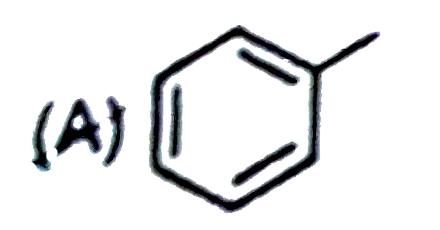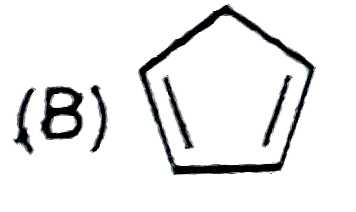Which molecules have sp3 carbon atoms :


HC≡C−CH=CH2
H−C≡CH3
To determine which molecules have sp3 hybridized carbon atoms, we need to analyze the bonding and hybridization of carbon in each molecule. Here's a step-by-step solution:
Step 1: Understand Hybridization
- sp³ Hybridization: A carbon atom is sp³ hybridized when it forms four single bonds (or four groups) around it. This typically occurs in alkanes.
- sp² Hybridization: A carbon atom is sp² hybridized when it forms one double bond and two single bonds (or three groups). This is common in alkenes.
- sp Hybridization: A carbon atom is sp hybridized when it forms one triple bond (or two groups). This is typical in alkynes.
Step 2: Analyze Each Molecule
1. Molecule A: Contains double bonds between carbon atoms.
- All carbon atoms are sp² hybridized due to the presence of double bonds.
2. Molecule B: Contains a carbon atom bonded to four groups (three hydrogen atoms and one carbon atom).
- This carbon is sp³ hybridized as it forms four single bonds.
3. Molecule C: Contains a carbon atom with a triple bond and another carbon with a double bond.
- The carbon with the triple bond is sp hybridized, and the carbon with the double bond is sp² hybridized.
4. Molecule D: Contains a carbon atom with a triple bond.
- This carbon is sp hybridized.
Step 3: Identify sp³ Hybridized Carbons
- From the analysis:
- Molecule A: No sp³ hybridized carbon.
- Molecule B: Contains one sp³ hybridized carbon atom.
- Molecule C: No sp³ hybridized carbon.
- Molecule D: No sp³ hybridized carbon.
Conclusion
The only molecule that contains sp³ hybridized carbon atoms is Molecule B.
Final Answer
- Molecule B has sp³ hybridized carbon atoms.
- sp³ Hybridization: A carbon atom is sp³ hybridized when it forms four single bonds (or four groups) around it. This typically occurs in alkanes.
- sp² Hybridization: A carbon atom is sp² hybridized when it forms one double bond and two single bonds (or three groups). This is common in alkenes.
- sp Hybridization: A carbon atom is sp hybridized when it forms one triple bond (or two groups). This is typical in alkynes.
1. Molecule A: Contains double bonds between carbon atoms.
- All carbon atoms are sp² hybridized due to the presence of double bonds.
2. Molecule B: Contains a carbon atom bonded to four groups (three hydrogen atoms and one carbon atom).
- This carbon is sp³ hybridized as it forms four single bonds.
- The carbon with the triple bond is sp hybridized, and the carbon with the double bond is sp² hybridized.
- This carbon is sp hybridized.
- From the analysis:
- Molecule A: No sp³ hybridized carbon.
- Molecule B: Contains one sp³ hybridized carbon atom.
- Molecule C: No sp³ hybridized carbon.
- Molecule D: No sp³ hybridized carbon.
The only molecule that contains sp³ hybridized carbon atoms is Molecule B.
- Molecule B has sp³ hybridized carbon atoms.
Topper's Solved these Questions
Similar Questions
Assertion (A) . All the carbon atom in H2C=C=CH2 are sp2-hybridised.
Reason (R). In this molecule all the carbon atoms are attached to each other by double bonds
View SolutionThe distance between the centres of carbon and oxygen atoms in the carbon monoxide molecule is 1.130Å . Locate the centre of mass of the molecule relative to the carbon atom .
View SolutionConsider the given statement about the molecule

1. Three carbon atoms are sp3 - hybridised
2. Three carbon atoms are sp2− hybridised
3. Two carbon atoms are sp - hybridised
View SolutionIn acetylene molecule, the carbon atoms are linked by:
View SolutionIn the formation of ethylene molecule , the carbon atom makes use of
View SolutionAmong the following compounds, which has three sp-hybridised carbon atoms ?
View SolutionWhich bonds are formed by a carbon atom with sp2-hybridisation ?
View SolutionWhich bonds are formed by a carbon atom with sp2-hybridisation ?
View SolutionIn a carbon monoxide molecule, the carbon and the oxygen atoms are separated by a distance 1.2×10−10m. The distance of the centre of mass from the carbon atom is
View SolutionWhich of the carbon atoms present in the molecule given below are asymmetric ?

View Solution
